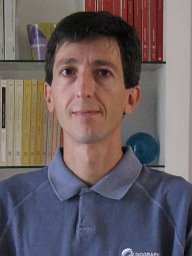The 13th IASTED International Conference on
Computer Graphics and Imaging
CGIM 2012
June 18 – 20, 2012
Crete, Greece
KEYNOTE SPEAKER
3D models for Cultural Heritage: there is more than visualization and rendering
Abstract
The technologies for creating digital 3D models of reality have undergone an impressive evolution in the last years and is mature enough to go beyond the plain visualization of those assets.
Although developed for the entertainment and for industrial purposes, these technologies are also ideal for helping the knowledge, investigation, preservation and restoration of cultural heritage (CH), devising new tools able to extend our insight capabilities and to revise the current consolidated procedures for CH research and management.
In particular, technologies developed for digital sampling - usually called 3D scanning - are useful for the creation of quantitatively accurate digital 3D models of CH artifacts.
Beside visualization's potential, CH scholars and practitioners perceive producing digital models and images just as an intermediate goal without getting the full potentialities of having this kind of data available. The greater challenge lies in creating new tools that allow a full exploitation of 3D models to assist CH research, helping to assess conservation status or to plan and document restoration.
Biography of the Keynote Speaker

Dr. Paolo Cignoni is a Senior Research Scientist with CNR-ISTI. He received a Ph.D. Degree in Computer Science at the University of Pisa in 1998. He has been awarded "Best Young Researcher" by the Eurographics association in 2004. His research interests cover Computer Graphics fields ranging from Level of Detail and out-of-core techniques for visualization and processing of huge 3D datasets, to 3D scanning data processing with a particular focus to its use in the cultural heritage field and to Scientific Visualization (molecular visualization and isosurface extraction). He teaches the main 3D Graphics course at the University of Pisa since more than 10 years. He started and still leads the development of MeshLab, a widely known open source mesh processing tool used by thousands of users in hundreds of universities, research centers and companies. He has published more than one hundred papers in international refereed journals/conferences and has served in the Program committee of all the most important conferences of Computer Graphics. He is in the Editorial Board of IEEE TVCG, The Visual Computer and ACM Journal on Computing and Cultural Heritage.
















